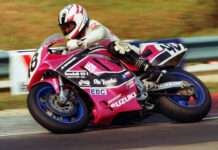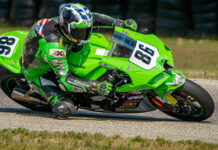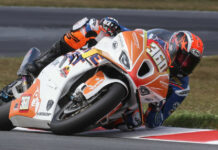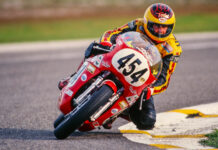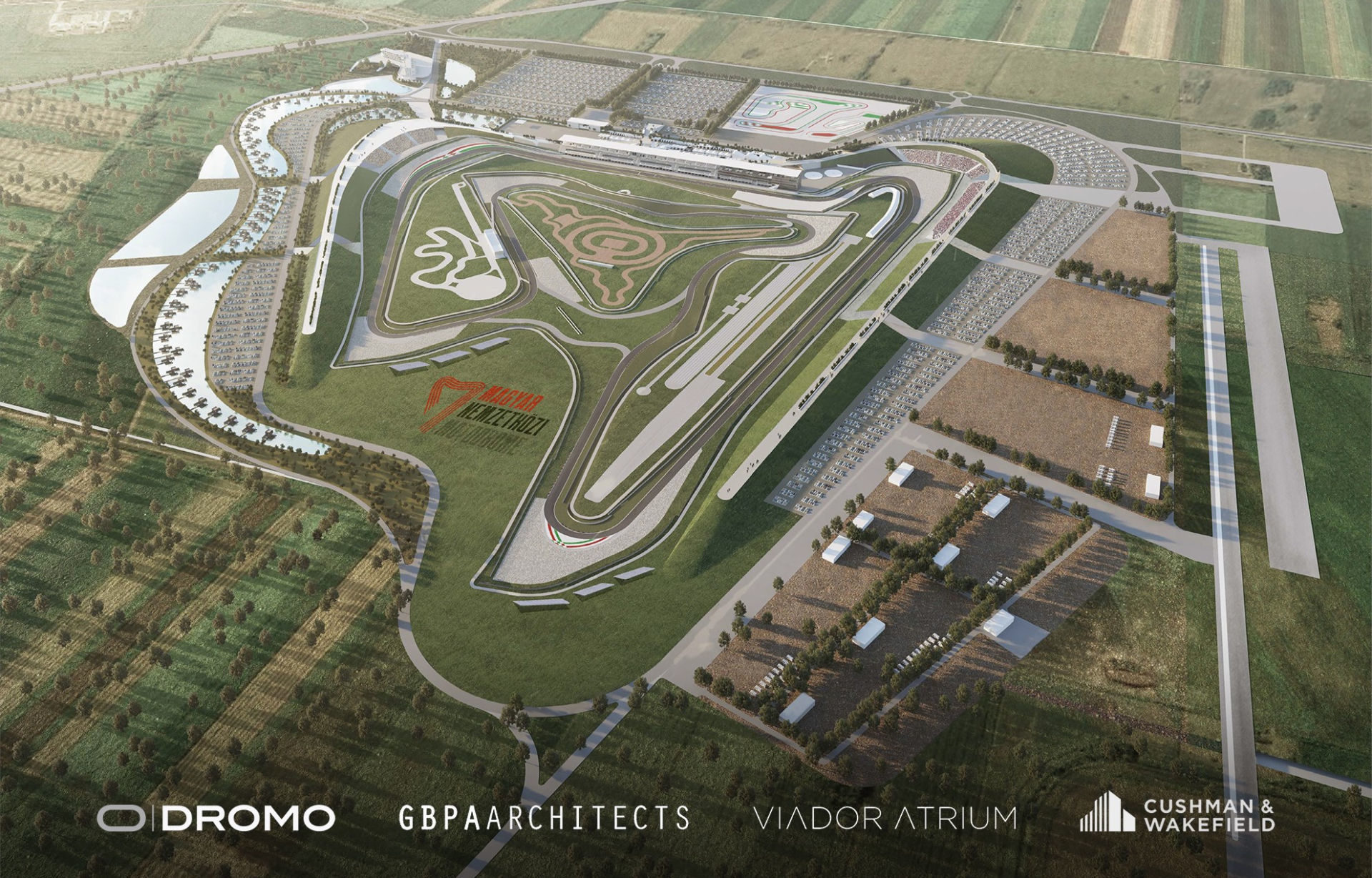Editorial Note: Scroll down to the bottom to watch a video of simulated laps of the proposed track design.
THE TRACK
15 corners with 7 complex radiuses will give a lot of character; height changes, cambers and blind crests will do the difference between boys and men; over 5 Km in length with 30% less use of the terrain, avg. speed of over 184 Kph, ideal lap time 1’38.7”.
In terms of safety, the proposed track has been done DroCAS™, the cutting-edge safety simulator for MotoGP and F1. The overall track has been assessed also by Artificial Intelligence algorithms (Transfer Learning + Generative adversarial network) to ensure the level of safety will be state of the art in respect of the actual racetracks.
The proposed layout provides several overtaking chances avoiding the long-straight-hairpin paradigm, that does not encourage multiple-turns battles. The first overtaking hotspot is Turn 1, a very fast bend that provides the opportunity for the battling competitors to stay close to each other up to the second hotspot, Turn 3, that should provide a perfect opportunity to finish the overtaking maneuver. Then, Turn 5, thanks to its generous banking, encourages competitors to try the inside line to pass. This is also the best hotspot for the Inner Loop configuration. After a challenging technical sector from Turn 6 to Turn 11 a new overtaking opportunity opens up at Turn 12. The longest straight of the track then provides the best opportunity to make the most of top speed advantage and complete a pass at the following Turn 14.
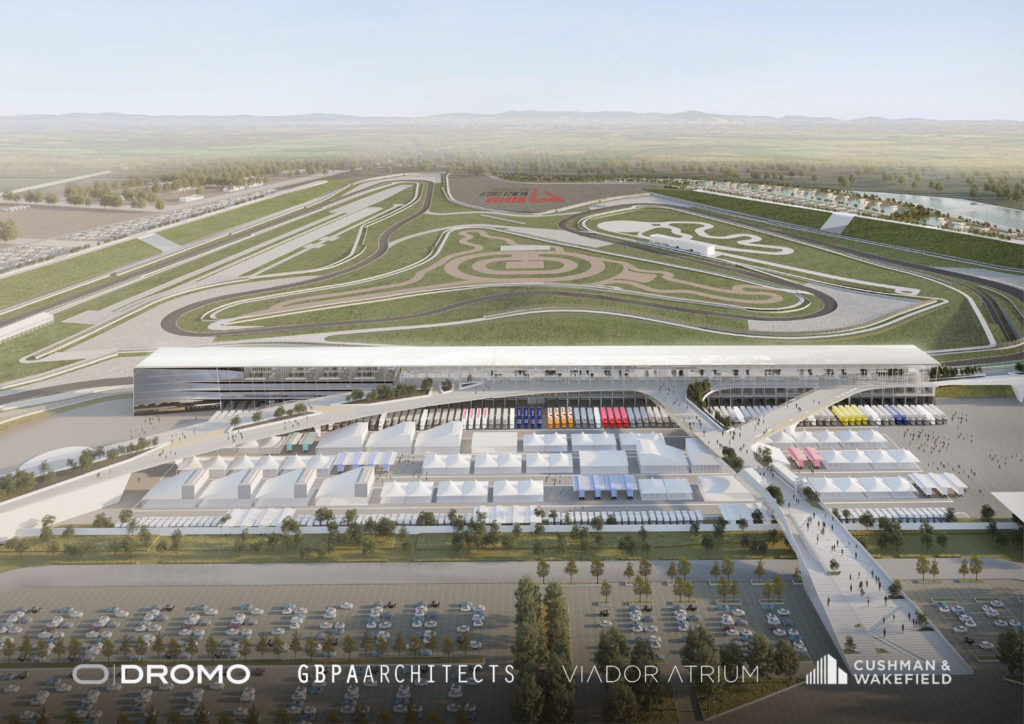
A no-impact design for MotoGP riders, validated with DIL Driving Simulators, will use composite runoffs to complete the safety level with FIM Grade A barriers on the first line of protection and latest FIA debris fences on the second. Full inner and outer service road to help marshalling and track operations is included to connect all points of the racetrack on both sides, also thanks to two underpasses that exploit the elevations changes of the track passing below it in an integrated manner.
Said that, the rideability has been inspired by the best in the World. Far from the modern “Mickey-mouse” circuits, it takes inspiration from the old TT-Assen (dubbed the “University of Motorcycling”) to the classic Suzuka, from the fastest Termas de Rio Hondo to the formidable Philip Island, rider’s favorite.
A unique trait of the proposed layout is the pit-exit solution that, exploiting the uphill Turn 1, passes below it and rejoins the track safely after Turn 2. Being an integral part of the masterplan – and not a thought after patch solution – the proposed pit-exit is not cramped and the turns that compose it are wide and flowing.
The pit-entry after Turn 14 follows a more traditional layout, leaving the track at the safest point available before the pits.
The Long Lap Penalty now required at top-level motorbike events is foreseen safely on the outside of Turn 12.
The CCW (counterclockwise) international Circuit (5050 m length up to 14 m wide, FIM Grade A – FIA Grade 1) can be split in two concentric configurations. A CW inner loop of 1659 m (FIA Grade 3) and a CCW outer loop of 3615 m (FIA Grade 2) that can be run completely independently and concurrently. The shortcuts allowing the track to be split in two separate are designed to minimize or even totally annul the need for barriers re-alignment, providing operational efficiency and savings.
Inside the spaces left by the circuit configurations, and around it, will take place different circuits, some requested and some suggested, to complete the offer of the Magyar Nemzetközi Motodrome.
“A HUMAN CENTERED TRACK: THE BEST EXPERIENCE FOR THE VISITORS, THE BEST EXPERIENCE FOR THE RIDERS”
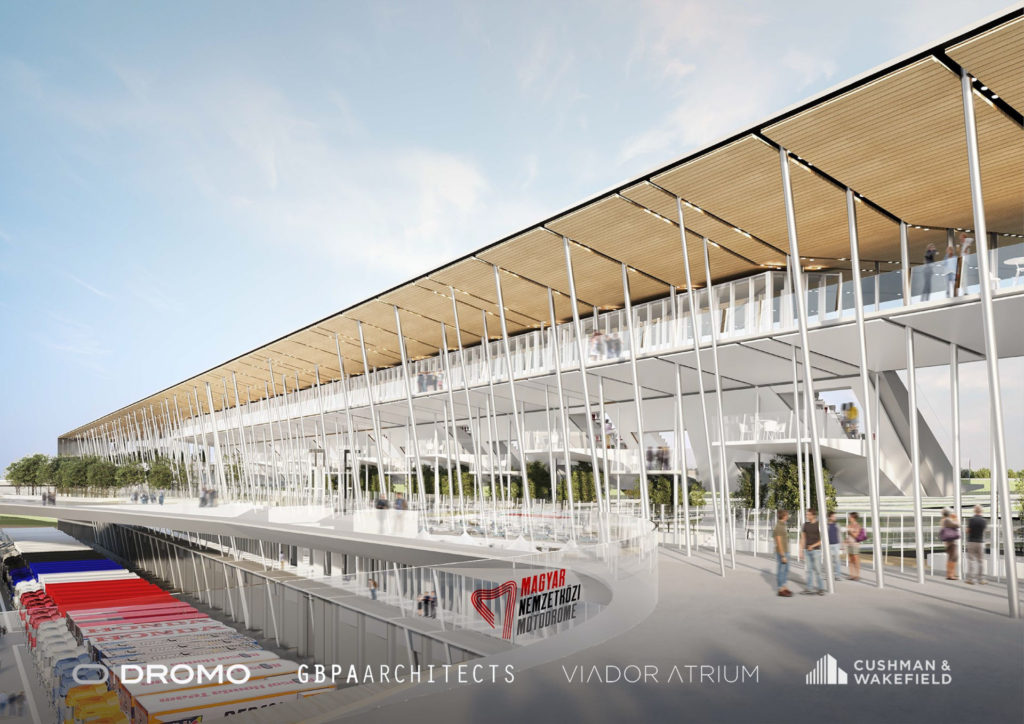
Why is our design streets ahead than the proposed track layout?
· Iconic and unique design, allow Hungary to be placed on a map with strong recognizability.
· Integrating the main pit building with the main grandstand allows to reduce the construction costs and operations, leaving the spectators to view the whole action on track
· An accurate phasing plan allow to build the first things required to host MotoGP at a great value, leaving the development of all the other facilities to be implemented with the remaining funds.
· Having the paddock external to the track allows to reduce the land usage, the length of the fencing and drainage system, in the end reducing the complexity of the site
· The asphalt is laid more where it is easier to lay, like the parking lots, reducing the highly specialized asphalt on the track through a flowing fast design, more entertaining, and safer
Why is this the best experience for the visitors?
· Because riders will enjoy it, visitors will be entertained, both on site and in television.
· The purpose of the project is to establish the maximum possible connection between the public and the activity of the track, with an approach to the project aimed at ensuring the best experience for the visitor;
· The visitor is always put on a higher level, through an elevated path that surrounds the track and connects all its main functions, and makes it possible for the visitor to have a privileged and more complete view throughout the event, from views of the Paddock to an almost 360° view of the track;
· Green areas and trees are totally integrated both in the system of distributive paths and in the architecture itself, in order to harmonize the project of the circuit with the surrounding landscape and to enrich and enhance the main places of interest of the system, making the circuit a unique biophilic organism;
· We developed a program that could add value on non-event days and mindful of phasing, thinking at the racetrack as a public MOTOR PARK, surrounded by implementable activities like a boutique hotel, private villas and retails spaces, to ensure long-term viability of the event and development;
WHO IS DROMO?
The Dromo project team is built around experts related to the design, engineering, construction, and hosting of motorsport events & other events. The team has experience of conversion of brownfield locations, green field motorsport circuits, and street circuits for cars & motorbikes.
Dromo have delivered designs for some of the world’s most famous iconic racetracks, with respect to enhancements, modifications, redesigns or refurbishment activities inclusive of resurfacing of tracks. The multi discipline team covers architectural, circuit design and master planning services to create motorsport facilities that are truly state of the art. Our extensive use of computer related technology, simulation tools developed in-house,
allows us to simulate multiple circuit solutions, resulting in an experience that’s electrifying for riders, drivers and, crucially, spectators.
Dromo is at the forefront of innovative technological sports destination and racing circuit design. Our research into structure, safety standards and technology means that the facilities we design are state of the art. Our analytical tools, allow us to simulate multiple solutions and test variable, e.g. run-offs and profiles. Although prototyping would be the ideal, the scale of most projects means testing these sequences is financially prohibitive.
That’s where the in-house high-tech simulators give Dromo the edge. They use these to allow the design team and named drivers /riders to test the circuit and make comment prior to the design being finalised.
The application of these softwares allows creation of various circuit layouts in very little time, and calculations indicative of speeds based on the more advanced 3 dimensional environment.


